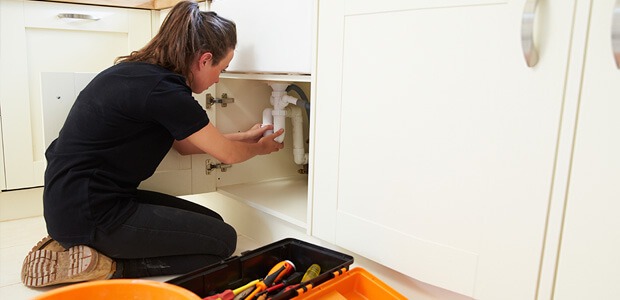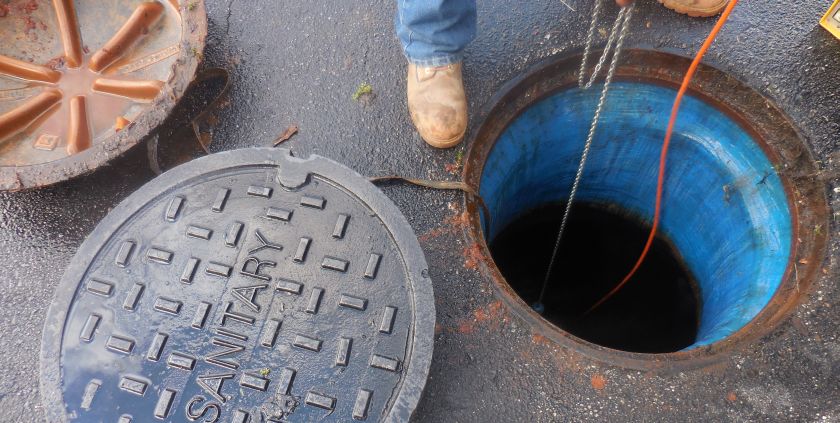Measures to Follow for Repairing a Blocked Drain Before Reaching out to Professional Plumbers
Measures to Follow for Repairing a Blocked Drain Before Reaching out to Professional Plumbers
Blog Article
Do you find yourself looking for content about 8 Tips For Clearing A Blocked Drain?

Introduction
Managing a blocked drainpipe can be an irritating experience, interrupting everyday tasks and potentially triggering damage to your building. Nevertheless, before reaching out to plumbing professionals, there are actions you can take to attend to the issue yourself. In this overview, we'll check out DIY remedies and preventive measures to take on a blocked drainpipe efficiently.
Identifying the Concern
The initial step in dealing with an obstructed drain is identifying the indicators. Slow-moving drainage, gurgling audios, foul odors rising from drains, or water support up prevail indications of a blocked drainpipe. Recognizing these signs early can help avoid additionally problems.
Common Reasons For Obstructed Drainpipes
Recognizing the variables that add to drain pipes obstructions is necessary for efficient resolution. Usual culprits include hair, soap residue, oil, food particles, and international items like sanitary products or paper towels. Tree origins getting into below ground pipelines can additionally trigger substantial obstructions.
Do it yourself Solutions
For minor obstructions, numerous do it yourself remedies can be efficient. Putting boiling water down the drain can aid dissolve oil and debris. Baking soda and vinegar or a mixture of salt and baking soft drink can work as all-natural cleansers. Making use of a plunger or pipes snake to dislodge blockages is one more choice.
Tools and Devices
Having the right devices on hand can make DIY drain cleaning much more effective. A plunger is a functional device for getting rid of clogs in sinks, toilets, and showers. A pipes snake or auger can get to deeper obstructions, while drainpipe cleansing chemicals can be made use of very carefully for persistent clogs.
Preventive Measures
To stay clear of future obstructions, adopting preventive measures is crucial. Mount drainpipe guards or strainers to catch hair and debris prior to they go into the pipes. On a regular basis flush drains pipes with hot water to liquify oil buildup, and prevent getting rid of grease or solid waste down the drain.
When to Call an Expert
While do it yourself remedies can resolve small blockages, specific indications show the requirement for professional support. Consistent obstructions, foul odors in spite of cleansing efforts, or numerous drains supporting concurrently are warnings that require expert intervention.
Choosing the Right Plumbing Service
When selecting a plumbing service, think about variables such as experience, licensing, and client reviews. Select a trustworthy plumbing technician with a record of quality handiwork and clear rates techniques.
Cost Considerations
The cost of specialist drain cleaning services can vary relying on the severity of the clog and the plumbing technician's prices. Request quotes from multiple carriers and inquire about any kind of additional charges to ensure transparency and stay clear of surprises.
Safety Measures
When attempting DIY drain cleaning, prioritize safety and security. Use protective handwear covers and eyewear to prevent contact with harmful chemicals or bacteria. Never ever blend different drainpipe cleansing products, as this can produce hazardous fumes.
Case Studies
Real-life examples highlight the effectiveness of do it yourself options and the importance of prompt professional treatment in settling drain clogs.
Conclusion
By complying with the tips described in this guide, you can successfully tackle blocked drains pipes and stop future plumbing problems. Whether opting for DIY remedies or seeking professional assistance, prompt action is vital to preserving a healthy and balanced plumbing system and protecting the integrity of your home.
How to Clear a Clogged Drain Yourself (And When to Call In the Professionals)
What Can Clog a Drain
Dirt Skin flakes Hair Grease Soap scum Food Offset pipes Tree roots Small objects Mineral buildup DIY Tricks to Unclog a Drain
You can fix this! Once you have identified the source of the clog (or have a vague idea), you can try one or a combination of these fixes in order to clear your plumbing.
Wire Hanger or Snake
Untangle and clear out hair from a drainpipe with a homemade snake. Use a straightened-out wire hanger with a 90-degree angle hook to locate the clog and drag out any unwanted material.
Remember not to push the clog further down to where the wire hanger cannot reach! If you need to follow up with a plunger, give it a try. Your efforts might be more successful after it’s been wire-snaked.
If you want to get fancy and don’t have a wire hanger to spare, head to the store and pick up a hand-operated drain snake. You can get one for $10-$30. It may save you the hassle, and provide additional length to reach deep into the clogged pipe.
Plunger
A cup plunger has a suction cup attached to a wooden handle. The rubber creates a seal around the drain, and increases the pressure force of the plunger.
Plunge for 30-second increments to loosen the clog. This may need to be repeated over the course of 15-20 minutes. Once plunged, run the water to flush the remaining material out of the drain.
Remember– never use a plunger if you have used a chemical drain cleaner. These chemicals can splash up from the force of the plunger and cause serious injury or burns.
Boiling Water
Hot water can sometimes break up materials into a flushable amount. Dirt, grease, and soap buildup requires heat in order to unstick from surfaces.
Take your kitchen kettle and heat your water to a boil. Once it reaches a rolling boil, pour it directly down the drain into the blockage. Carefully follow with plunging, if necessary.
Don’t worry if this takes more than one try! It can often take multiple kettles and repeated plunging in order to clear a particularly stubborn clog.
Chemical Drain Cleaner
As a last resort, pick up a bottle of chemical drain cleaner. Drain-cleaning chemicals are potent, and not very good for the environment.
You may need to wear protective eyewear in gloves before handling your bottle of chemical drain cleaner. Follow the instructions printed on the bottle, and flush with water as soon as the instructions allow. Do not follow with plunging.
Baking Soda and Vinegar
As a safer alternative to chemical drain cleaner, baking soda and vinegar can create a chemical reaction that clears tough clogs.
Combine one cup of cleaning vinegar with one cup of boiling water, and set aside. Once you have done this, pour half a cup of baking soda down the drain. Give the baking thirty seconds to settle and cover a large portion of the problem drain.
Following the baking soda, pour down your vinegar and hot water solution. Once the vinegar and baking soda combine, the mixture will bubble and fix. Let this reaction fizzle in the drain for about an hour.
After an hour, follow with a kettle’s worth of hot water. The heat and liquid should flush out any remaining material.
When to Call a Plumber
If your DIY attempts haven’t cleared your clog drain, it’s time to call in a professional. It’s not worth losing access to your kitchen sink or high-traffic bathroom. A clog in a vital area can keep you from the things you’d rather be doing, and derail your routine.
Anytime a clog is causing water to spread is a time to call in a plumbing service. What starts out as a little bit of water can quickly grow into serious, expensive water damage.
Additionally, a serious clog can result in burst pipes or serious leaks. Make sure you know when to take it seriously!
https://myguysnow.com/how-to-clear-a-clogged-drain-yourself-and-when-to-call-in-the-professionals/

I stumbled upon that piece on Some easy tips to fix blocked drains while doing a lookup on the search engines. Are you aware of somebody else who is fascinated by Tips for Dealing with Clogged Drains and Sewer Lines? Do not hesitate to promote it. Thanks a lot for being here. Come back soon.
Book Report this page